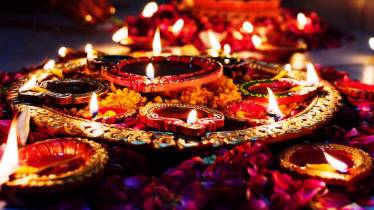Diwali 2022 Puja Muhurat: Diwali is called the Festival of Lights for a reason. Just like a flame of light ends the darkness, the presence of knowledge brings an end to ignorance. Diwali, is also a festival of bringing prosperity into our lives, depicting lights as the embodiment of positivity and optimism.
“Deepawali derives its name from the words – Deepa (clay lamps) and Avali (the row). Diwali is a Sanskrit word meaning “series of lights”. It is also called Dipotsavam translating to “festival of lights”. The main festival night of Diwali falls on the darkest, new moon night of the Hindu Lunisolar month Kartika in Bikram Sambat calendar,” Pankaj Khanna, Chairman, Khanna Gems said.
Diwali Shubh Muhurat:
The tithi (date) for Lakshmi puja coincides with Amavasya or new moon day. This year, it will be commemorated on 24th October (Monday)
Amavasya’s tithi begins on 17.27 on 24th October 2022
Amavasya’s tithi ends on 25th October 2022 at 16.18 PM
Pradosh Kaal – 17:42 pm to 20:15 pm
Vrishabha Kaal – 1853 pm to 20:49 pm
Diwali Lakshmi Pujan Muhurat 18.53 to 20.15 on 24th October
Also Read | Welcome Maa Lakshmi this Diwali 2022: Complete guide to attract wealth, positivity, and growth
Significance of Diwali or Deepavali
According to Pankaj Khanna, “Diwali is widely celebrated as the homecoming of Lord Rama with his wife, Goddess Sita to Ayodhya and brother Laxmana to his kingdom Ayodhya after 14 years of exile. Lord Rama who left for his ‘Vanvaas’, following his father King Dasharat’s command, spent 14 years wandering in the forests and villages of India. Towards the end of his exile, Sita is abducted by the ten-headed king of Lanka Ravana who disguises himself as a Yogi as asks Sita for ‘Bhiksha’ (offerings). While handing it over to him, Sita crosses the Laxman-Rekha drawn by Ram’s younger brother Laxman and Ravana is able to capture her. Lord Ram, on hearing this, launches a war against the army of Ravana and reaches Lanka to fight Ravana and bring his wife back. The victory of Lord Rama in the epic battle of Ramayana symbolizes the victory of good over evil. It is believed that when the news of Lord Ram returning to his homeland reached Ayodhya, the entire city was lit with thousands of oil lamps (diyas) and decorated with flowers and beautiful rangolis. Since then, Diwali has been known as the festival of lights.”
Diwali is also celebrated as an occasion when Lord Rama was coronated. In Southern India, Diwali is celebrated to honour Lord Krishna who defeated the demon Narakasura.
How Diwali is celebrated:
In order to welcome, Lord Ram into their homes people decorate their houses with oil lamps, which is why the festival is also called ‘Deepavali’. The tradition of lighting oil lamps symbolizes the victory of good over evil. People also make preparations to welcome Goddess Lakshmi by drawing beautiful rangolis, and Paduka (footsteps) on the entrance of their houses.
Prior to Diwali night, people clean, decorate or renovate their houses or workplaces. During the main festival people light up their homes with lamps and candles. After that goddess Laxmi is worshiped, as the devotees offer prayers to the goddess of wealth for materialistic abundance and prosperity. New ventures and new accounting years are also initiated on this day by worshipping Goddess Lakshmi. New ventures and new accounting years are also initiated on this day by worshipping Goddess Lakshmi.
Then, fireworks are performed followed by offering sweets and exchange of gifts among families, friends and relatives.
